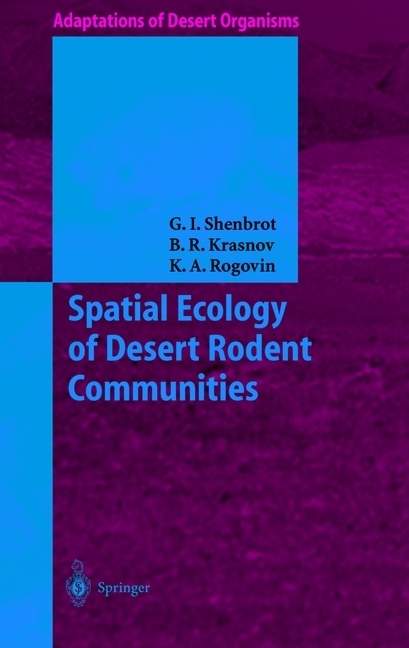Ulteriori informazioni
Rodents are conspicuous and important components of the desert biome. Many general concepts in modern community and behavioral ecology use them as a main model.
This volume compiles and generalizes data on the spatial structure of desert rodent communities, taking into account both global (biogeographic) and local (ecological) patterns. It is based on studies of rodents in different deserts of the Northern Hemisphere (Karakum, Kyzylkum, Bet-Pak-Dala, Gobi, Thar, Chihuahua, Negev, and North Caspian deserts) as well as on a thorough analysis of the literature.
Sommario
1 Introduction.- 2 Deserts of the World.- 2.1 Common Features.- 2.2 Regional Features.- 3 Composition of the Rodent Faunas of Different Desert Regions.- 3.1 Biogeographic Classification Using Rodents as a Key Taxon.- 3.2 Rodent Faunas of the World Deserts.- 4 Geographic Patterns of Faunistic Composition.- 4.1 Taxonomic Composition.- 4.2 Taxonomic Diversity.- 4.3 Species Richness.- 5 Inter-Desert Comparisons of Rodent Faunas.- 5.1 Climatic, Substrate and Vegetation Features Important for Rodents.- 5.2 Distribution of Body Sizes Within Regional Faunas.- 5.3 Distribution of Locomotory Modes Within Regional Faunas.- 5.4 Distribution of Feeding Modes Within Regional Faunas.- 6 Life Forms of Desert Rodents and Convergent Evolution Among Species of Different Faunas.- 6.1 Life Forms of Desert Rodents.- 6.2 Convergent Evolution Among Species of Different Faunas.- 7 Species-Habitat Relationships in Desert Environments.- 7.1 Methodology of Analysis: Niche Concept and Description of Niche Dimensions.- 7.2 Habitat Structure and Types of Habitat Specialization.- 7.3 Morphological Correlates of Habitat Specialization.- 7.4 Habitat Specialists and Habitat Generalists in Deserts.- 7.5 Habitat Selection as a Mechanism of Species Distribution.- 8 Spatial Organization of Desert Rodent Communities.- 8.1 Definitions.- 8.2 The Qualitative Approach to the Analysis of Community Composition.- 8.3 Multivariate Description of Spatial Structure.- 8.4 Environmental Factors Structuring a Community.- 8.5 Guild Structure and Factors Determining It.- 8.6 Spatial Patterns of Species Diversity in the Rodent Communities of Different Deserts.- 8.7 The Role of Interspecific Competition in Community Structure.- 8.8 Temporal Dynamics of Spatial Structure.- 9 Conclusions and Perspectives for the Future.- 9.1 Historical and Ecological Components of Spatial Structure.- 9.2 Ecological Concepts and Comparataive Approach.- 9.3 The Lack of Empirical Data.- References.- Appendix: List of Rodent Species Considered to be Desert-Dwellers.

